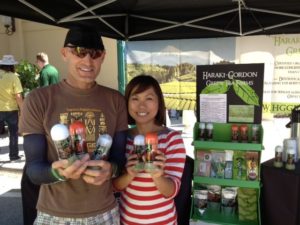 For the New Year, we are launching a new monthly series on “Long-Jet”, short for Longevity. There are life forms such as trees that have lasted for five centuries. For the human race, scientists have identified “Blue Zones” in certain locations around the World, where there is a higher incidence of individuals living into their second century and continue to enjoy reasonably good health and happiness.
For the New Year, we are launching a new monthly series on “Long-Jet”, short for Longevity. There are life forms such as trees that have lasted for five centuries. For the human race, scientists have identified “Blue Zones” in certain locations around the World, where there is a higher incidence of individuals living into their second century and continue to enjoy reasonably good health and happiness.
One of our primary sources is National Geographic’s “Blue Zones … The Science of Living Longer”, October/November of 2018 edition. For each “Blue Zone” we highlight this year, we will emphasize their sources of potable water … in our opinion, active electromagnetically-charged water such as clean rainwater, is one of the top secrets to good health. As AquaNew Inventor Rob Gourley said somewhat kiddingly … “The space aliens likely drank cosmic water and it is speculated that they live well beyond the years of Earthlings”.
A Long-Jet Secret: Japanese Matcha Green Tea
Izumi and her husband, Tony sell Matcha green tea grown on her parents’  organic farm. Their business name is Haraki-Gordon and they sell the tea both online and each Saturday morning at the farmers market held in Downtown Sarasota, FL. They give free samples of the different tea varieties brewed with Watt-Ahh.
organic farm. Their business name is Haraki-Gordon and they sell the tea both online and each Saturday morning at the farmers market held in Downtown Sarasota, FL. They give free samples of the different tea varieties brewed with Watt-Ahh.
Last time we purchased Matcha tea powder from Izumi. she told us that her parents decided to harvest the leaves from their 500-year tea trees. What is special according to Izumi, is the trees are native to the Japan Island. We did not hesitate to purchase some of the limited edition Matcha tea powder from her.
Camellia japonica is the native tea tree of Japan. The harvested leaves and buds of the Camellia sinensis is best known for commercial tea production. Tea can be made from any camellia species. The process of making tea transforms new growth leaves and buds that have no smell into flavorful, aromatic tea with compounds that may reduce inflammation and cellular senescence that causes tissue dysfunction due to aging.
Blue Zone Village of Motobu, Okinawa Japan
Longevity Diet: Primarily vegetable servings with diary and meat representing 3% of the calories; limited fruit. Pork stewed for days, skimming off the fat, such that the meat was mostly high-protein collagen. Some of the other food preferences: sweet potato, radish, green leafy vegetables, turmeric, seaweed, tofu and noodles.
Beverages: green tea with scented jasmine flowers and occasional millet brandy
Primary Potable Water Source: Rainwater collected during the typhoon season.
After WWII with an onslaught of fast food: higher consumption of rice, bread, milk, eggs and poultry along with a higher incidence of lung, breast and colon cancer. Dams were constructed for water supplies.
Point of Cosmic Interest: The Shio River located on Okinawa has a rare formation around the world of both saltwater and freshwater springs. The river is one of Japan’s designated natural monuments. Some believe such as antiquated societies and contemporary alien t.v. shows that the halocline (interface into the lower saltwater with toxic levels of hydrogen sulfide) might be a stargate or portal for the passing of souls or used by extraterrestrials to access another world.
Read more about the 2019 Long Jet Year: Secrets of Longevity monthly series here.
Sharing AHA! Discoveries
Do you have a “Long-Jet” Discovery to share for a longer and healthier life? Or, do you have either an Ahh-mazing “AHA!” Discovery or a story to share on a different topic?
Email inquiries@aquanew.com. This can be any idea or endeavor that may help others in their own revelation or better quality of life. Alternatively, want to nominate someone with special skills of creativity and innovation? Let us know!
